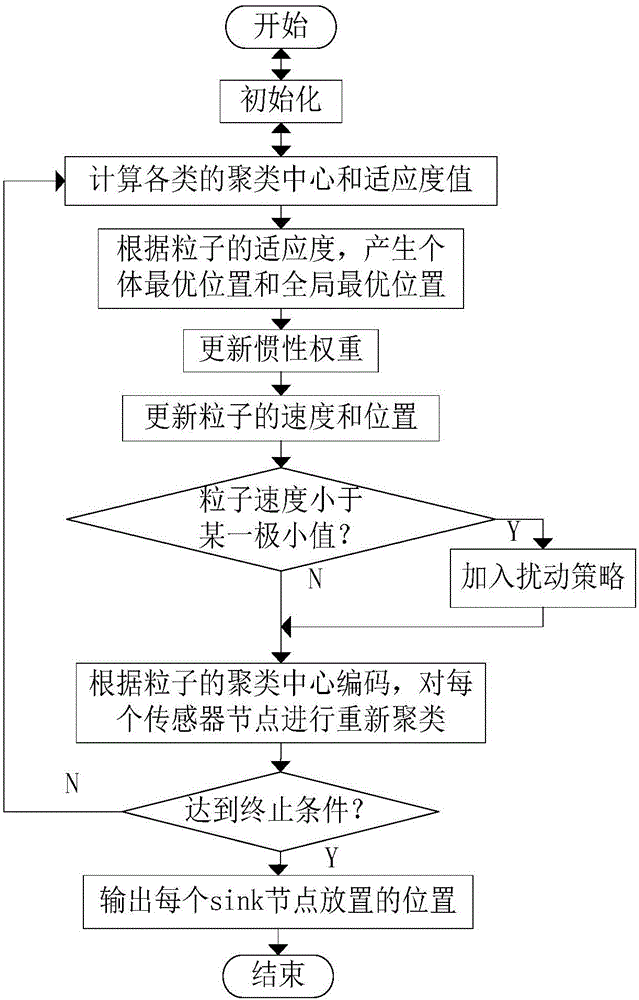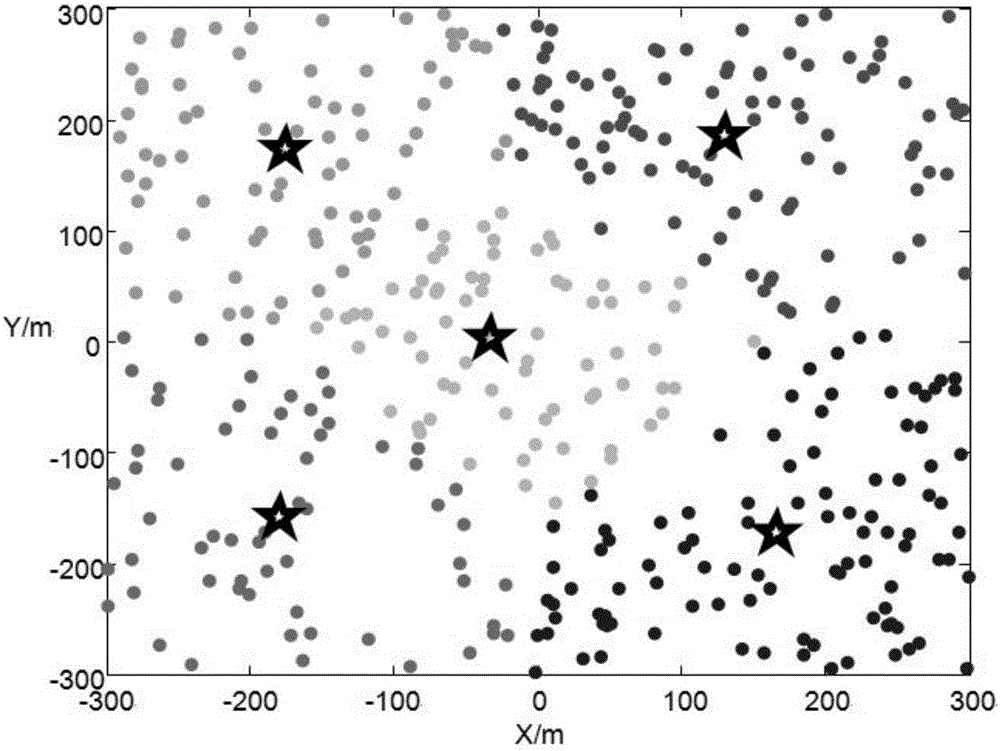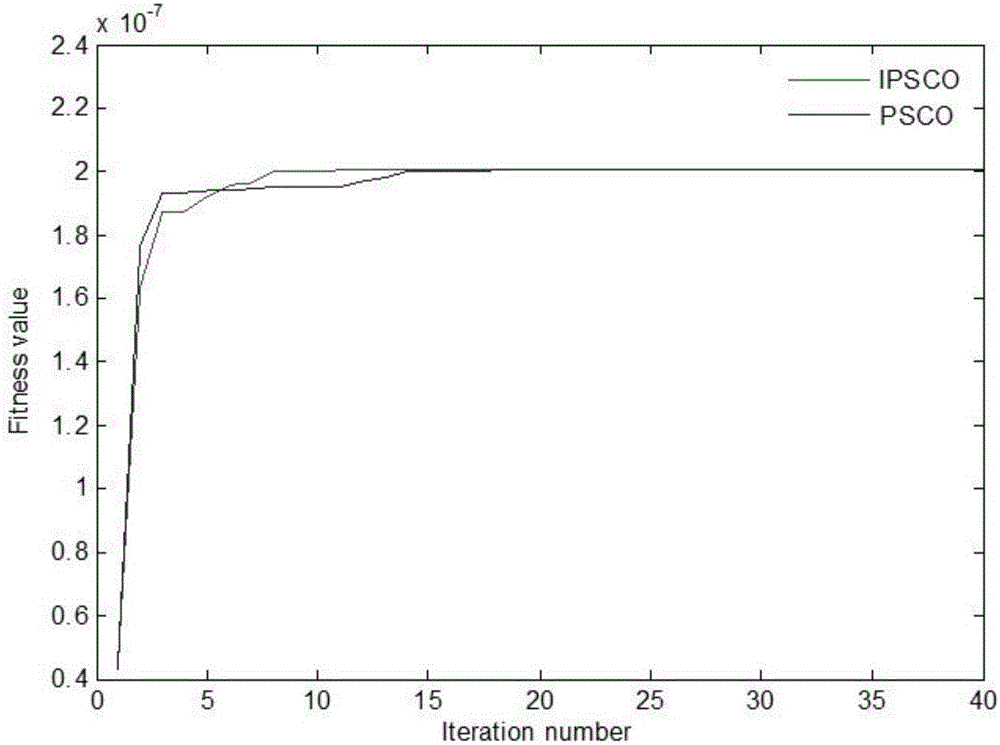Multi-sink deployment and fault tolerance method for wireless sensor network
A wireless sensor and sensor node technology, applied in network topology, wireless communication, data exchange network, etc., can solve problems such as fault-tolerant methods and achieve reliable operation
- Summary
- Abstract
- Description
- Claims
- Application Information
AI Technical Summary
Benefits of technology
Problems solved by technology
Method used
Image
Examples
Embodiment 1
[0071] A multi-sink deployment and fault-tolerant method for wireless sensor networks. Through the multi-sink optimal deployment method based on improved particle swarm clustering, the improved particle swarm optimization algorithm is combined with K-means clustering, and all sensor nodes in the network area are Clustering, divided into K different areas, and multiple sink nodes are deployed in the center of each category to achieve reasonable network partition and multi-sink node deployment optimization; at the same time, for the failure of a sink node in a multi-sink network , propose a routing algorithm with fault-tolerant mechanism, the algorithm adopts the fault-tolerant mechanism of multi-path routing, and its steps are as follows figure 1 shown.
[0072]Assuming that the number K of sink nodes to be deployed in the network is 5, the number of randomly distributed sensor nodes in the network is 400, and the network area is 600m×600m, the entire network is divided into 5 ...
PUM
 Login to View More
Login to View More Abstract
Description
Claims
Application Information
 Login to View More
Login to View More - R&D
- Intellectual Property
- Life Sciences
- Materials
- Tech Scout
- Unparalleled Data Quality
- Higher Quality Content
- 60% Fewer Hallucinations
Browse by: Latest US Patents, China's latest patents, Technical Efficacy Thesaurus, Application Domain, Technology Topic, Popular Technical Reports.
© 2025 PatSnap. All rights reserved.Legal|Privacy policy|Modern Slavery Act Transparency Statement|Sitemap|About US| Contact US: help@patsnap.com



